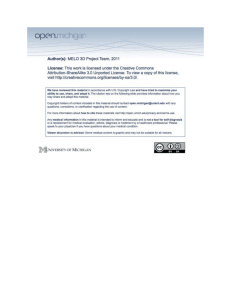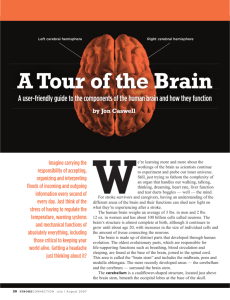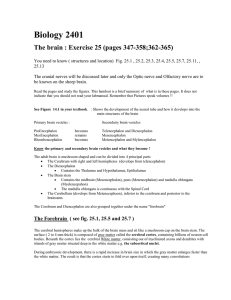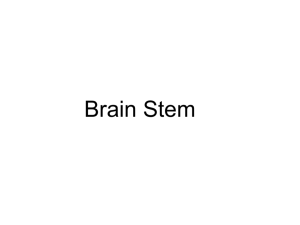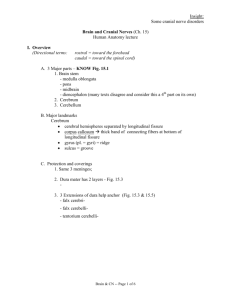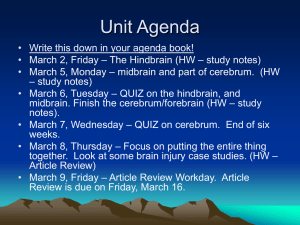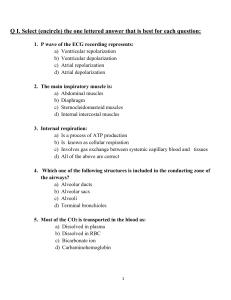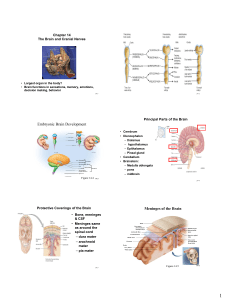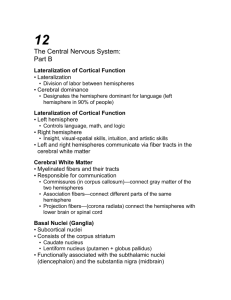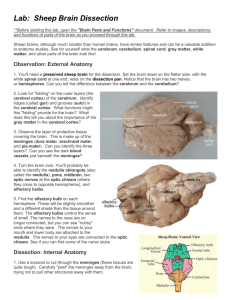brain-drag-and-drop
advertisement
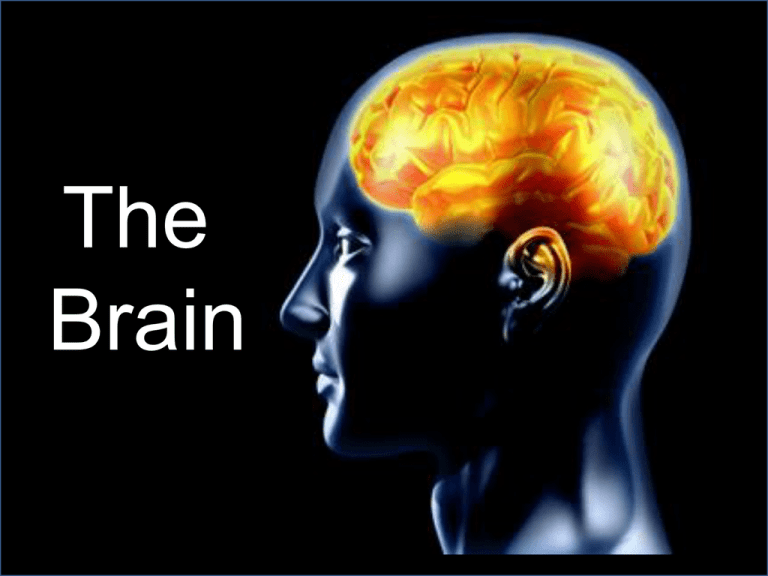
The Brain External structure of the brain Parietal lobe Frontal lobe Occipital lobe Temporal lobe Cerebellum Brain stem Functions of the lobes Link to 3D image of brain Spinal cord Internal structure of the brain corpus collosum cerebral cortex thalamus ventricle hypothalamus cerebellum pituitary gland pons midbrain medulla oblongata medulla oblongata pituitary corpus hypothamalus cerebral ventricle thalamus midbrain pons cerebellum collosum gland cortex cerebral cortex Sensory information such as vision, smell and hearing processed here. Higher cognitive functions. corpus collosum Connects the left and right hemispheres to coordinate information hypothalamus Homeostasis: control of body temperature and osmoregulation. Secretes hormones pituitary gland Produces hormones that control growth, sexual development and metabolism midbrain Involved in control of visual and auditory systems. Also controls body movement cerebellum Fine motor control, posture and balance pons Links the medulla with the thalamus medulla oblongata Controls breathing, heart rate and blood pressure; reflex actions such as vomiting and sneezing Structure Function cerebral cortex hypothalamus cerebellum midbrain pons medulla oblongata corpus collosum pituitary gland Drag the function to the matching structure: Homeostasis: Sensory information control such of body as vision, temperature smell and and hearing Control of visual and auditory systems. Also controls Controls breathing, heart rate and blood pressure, alsobody Produces hormones that sexual development Connects the left and right hemispheres coordinate Links Finethe motor medulla control, with posture thecontrol thalamus andgrowth, balanceto osmoregulation. processed here. Higher Secretes cognitive hormones functions movement controls reflex actions such as vomiting and sneezing and metabolism information Studying the brain Scientists study the functions of parts of the brain by observing the behaviour of people who have suffered brain damage or have degenerative brain diseases. Scientists also use animal studies to investigate brain functioning. Phineas Gage: experienced personality and behavioural changes after damage to his frontal lobe A stroke of insight: the effects of a stroke (TED talks: 19 minutes) Medical imaging technology CT scans (computerised tomography): Use X rays to identify major structures and can detect problems such as tumours and aneurisms. Sometimes a dye has to be injected into the blood. CT scan showing a brain aneurism (swelling of the artery) CT scan video Medical imaging technology Magnetic resonance imaging (MRI): Uses high level magnetic field and radio waves to image soft tissues. It is useful for diagnosing tumours, clots, infections and brain damage MRI scan of a brain tumour CT scan of same tumour MRI scan video Medical imaging technology Functional magnetic resonance imaging (fMRI): Monitors changes in brain activity by measuring the changes in blood flow and oxygen uptake. Allows for the study of the different functions of the parts of the brain. FMRI images of the brain showing brain activity Potential uses of fMRI (4 minute TED talk) Quick Quiz: Internal structure and function of the brain Label the parts of the brain 2 1 8 3 7 4 6 5 State the parts of the brain which have the following functions 9. Regulates body temperature and osmoregulation. Secretes hormones. 10. Connects the left and right hemispheres. 11. Processes visual, smell and auditory information, higher cognitive processes. 12. Fine motor control. Balance and posture. 13. Controls breathing and heart rates plus reflex actions such as vomiting. 14. Controls visual and auditory systems, controls body movement. 15. Secretes hormones that control growth, metabolism and sexual development. Answers: 1. Cerebral cortex 2. Corpus collosum 3. Cerebellum 4. Pons 5. Medulla oblongata 6. Midbrain 7. Pituitary gland 8. Hypothalamus 9. Hypothalamus 10. Corpus collosum 11. Cerebral cortex 12. Cerebellum 13. Medulla oblongata 14. Midbrain 15. Pituitary gland Interesting links Neuroethics Neuroscience for kids BBC: The Mind and Brain TED talk: creativity and fMRI (19 minutes) www.clickbiology.com
